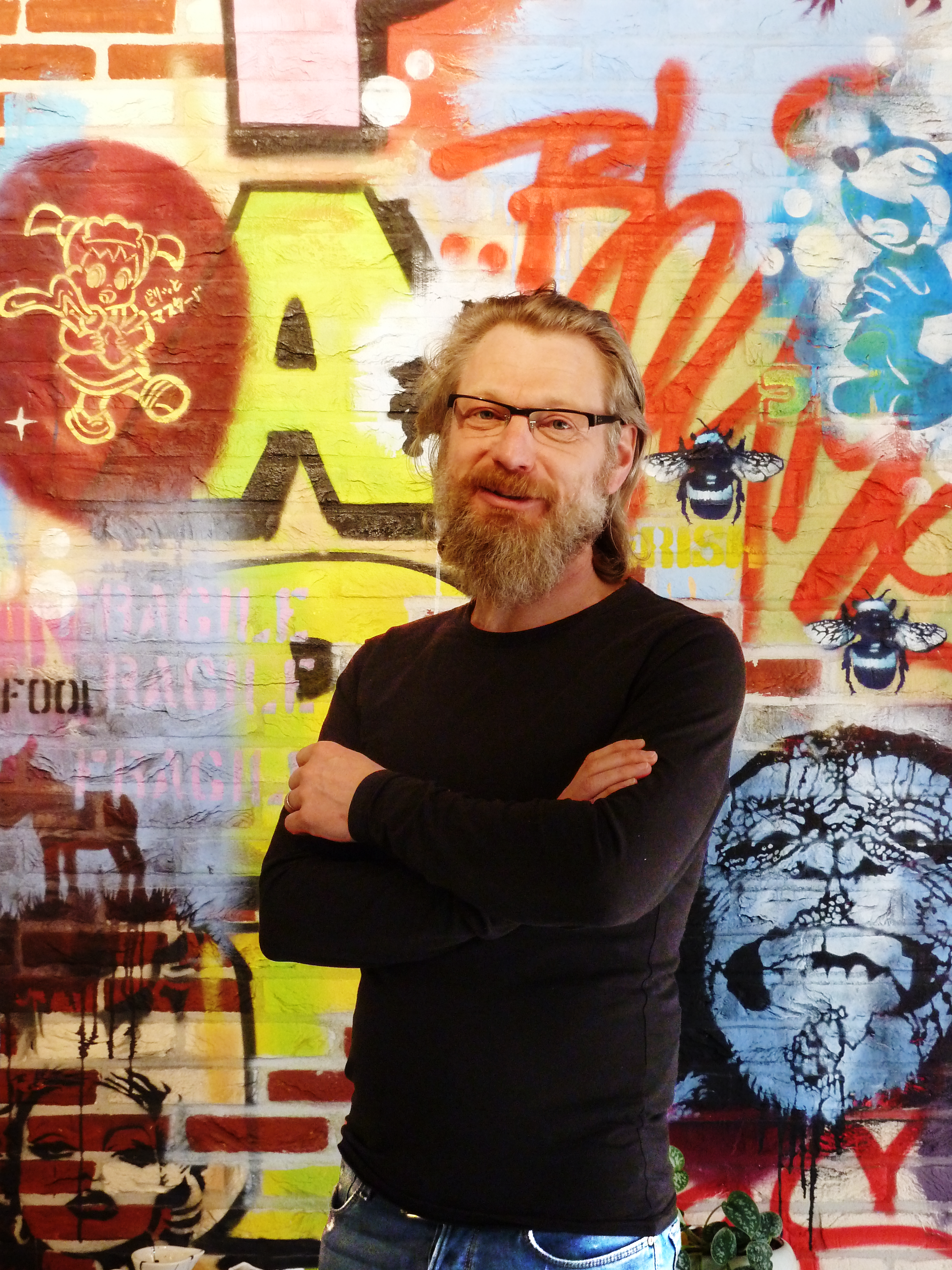Your iceberg is melting. Your cheese is being moved–at light speed. The balance
of society has rapidly shifted from industrial (often physical) labor to digital (often virtual) work.
It profoundly changes the fabric of society and our social systems. The industrial paradigm is rendered useless. The need for agility is bigger than ever. Hence, the value of the Agile paradigm, today and in the foreseeable future.
System Update Required
Many beliefs and constructs of our current society have their roots in the industrial age. In the industrial age, progress mostly came from the development of mechanical devices, machines, and equipment. In the underlying (industrial) worldview, players were typically expected to robotically follow prescribed algorithms of repetitive activities to produce pre-defined results, in assumed or enforced stable working conditions.
The industrial beliefs and practices reigned over society for the past couple of centuries. Today, prosperity and progress can no longer be assured through this paradigm. Now, and in the foreseeable future, survival and success depend on our ability to unleash and frame the cognitive and creative abilities of all players involved in regularly creating novel products and services, while operating in turbulent circumstances.
A vast majority of work in modern life has quickly shifted from the ordered stability space to the complex novelty space. People and organizations in many domains of society cling to the old paradigm. Its promise of reasonable predictability is tempting, even when negated by the daily reality of work and life. Organizational gravity and cultural inertia prevent the much-needed
updates and upgrades to our structures and constructs, keeping them unfit for the 24/7 information age.
Ironically, acting upon the premises of the past paradigm results in an actual inability to act. Expectations and predictions are outdated before they can be fulfilled. No meaningful work is completed before new, seemingly reasonable, predictions are raised. Complexity turns into perplexity, an inability to act, an individual or collective state of being overwhelmed by complexity, permanently.
 This article is published in
This article is published in  . Agile NXT is a new magazine full of inspiration for professionals on the emerging Agile journey. It challenges you to think differently and improve yourself, your team, and company a little more each day.
. Agile NXT is a new magazine full of inspiration for professionals on the emerging Agile journey. It challenges you to think differently and improve yourself, your team, and company a little more each day.

The Subject of Change
Working and living in the 24/7 information age forces us to think, understand, and act quickly, yet with grace. We need to swiftly address unexpected challenges, explore and change direction, take advantage of the unforeseen. We need to act with agility.
The Agile Manifesto established a clear alternative for the industrial views in software development (2001). People worldwide made Scrum (1995) the most preferred definition of Agile.
As society moves deeper into the complex novelty space, ever more new organizations worldwide discover the value of Scrum to address their complex challenges. Delivering software products is only one field of application.
In the current, third Scrum wave, ideas and movements converge toward the simplicity of Scrum
again. Simplicity is the path to navigate the complexity of our world. Scrum is indeed minimal, yet sufficient to effectively address complex challenges in complex circumstances.
Observation shows how difficult it is to cohesively employ Scrum without sacrificing its intrinsic simplicity. Organizations twist Scrum to fit their current structures, often remainders of the industrial age. Others aggravate Scrum with additional roles and phases. Many break Scrum’s cohesion by ignoring the essential rules, principles, and values that underly it.
Still. Scrum, implemented by the book or otherwise, is no more than a start.
The internal foundation required to increase an organization’s agility is the new Agile way of working. Agile allows more room for learning, improving and continuous adaptation. It restores respect for people and re-humanizes the workplace. But the ultimate value is in the agility demonstrated outwardly. Both are not just functions of a process like Scrum, but also of the internal structures. Rigid structures are the antithesis of agility.
The Scrum framework creates the boundaries within and upon which organizational structures can re-emerge, despite the absence of explicit instructions in Scrum on how to do so. Scrum is an invitation to think across existing structures and re-emerge an organization’s way of working. The adoption of Scrum is an opportunity to upgrade your organization. It requires courage, belief and persistence.
Agility is why organizations adopt Scrum. The benefits of Scrum will not fully unlock the desired and needed agility of an organization without touching the broader organization.

Reversification–A Different Act
Agility is critical in the complex novelty space. Scrum is defined and proven. Yet, a clear and burning urgency is rarely enough.
Adopting Scrum to upgrade an organization for complex novelty work is not just a technical or
process matter for people hardened in the industrial paradigm. When those people attempt to transform their organization from the industrial to the Agile paradigm, serious mismatches occur. That’s because they are primarily working with what they already know - the tools, language, and practices of the industrial paradigm!
You can see the two paradigms in direct conflict in situations where increasing numbers of teams are mass-commanded into some derivative of Scrum against imposed deadlines and other
top-down expectations. When teams are established within existing departments, and some big-name model at scale is selected as the one and only future operating model, agility is believed to increase. After a while, easily a few years, a giant deflation happens.
What was perceived as an increase in agility turns out to be an illusion, supported only by impressive progress on paper, e.g., lay-off figures and internal improvements. The agility demonstrated outwardly has hardly improved; morale, belief, and conviction plummet.
Unfortunately, this is a reasonably predictable result.
Teams that must work within the confines of their traditional line organization rarely focus on end-to-end benefits for end-users. Significant dependencies, delays, and overhead are hidden in
hierarchy and power games. The organization rarely invokes engagement, focus, and intrinsic motivation.
The path of increasing agility via Scrum will inevitably be a cobblestone path. It is a highly complex endeavor that requires well-considered steps of experimentation and learning. Change comes in increments too.
It is no model and has no pre-empted linearity or organizational blueprints. It thrives on deliberate emergence, actions to provoke changes and events to happen, not being able to predict the outcomes, but using time-boxing and regular inspections and adaptations to pave the path. All models are wrong, even the ones that are right.
Re-imagining Scrum starts by considering how it enables the creation of an ecosystem to deliver end-to-end value. Start your custom act of reversification with the creation of one ecosystem having all abilities and authorizations to serve one product or service, completely, end-to-end.
Support the involved players in merging and reforming teams with the goal of optimally serving
consumers, users, and stakeholders. Facilitate the ecosystem with tools, infrastructure, shared (visual) workspaces.
Act, learn, change, replicate, expand. Grow your own model. Develop your agility as a unique signature of your organization. Support the emergence of more and more ecosystems.
More and more functions are performed within the ecosystems, allowing the nervous system to focus on its core functions; transmitting, connecting, feeding, nurturing.
All constructs dating from the industrial age are gradually replaced with structures that have flexibility and adaptability in them, the flexibility and adaptability required for the complex novelty space.Your organization will be reversified. Rhythm, cadence, and poetry are restored. The workplace is humanized. Agility becomes the DNA of your organization.
Regardless of formal names, structures, processes or models applied, your organization is genuinely Agile in that it thrives on the prime Agile tenets: people-driven; iterative, incremental
progress; and value as the measure of success.
Want to know more about this topic? Download  and change your tomorrow. Or join us at AGILENXT.com for the latest Agility content and Conferences.
and change your tomorrow. Or join us at AGILENXT.com for the latest Agility content and Conferences.






